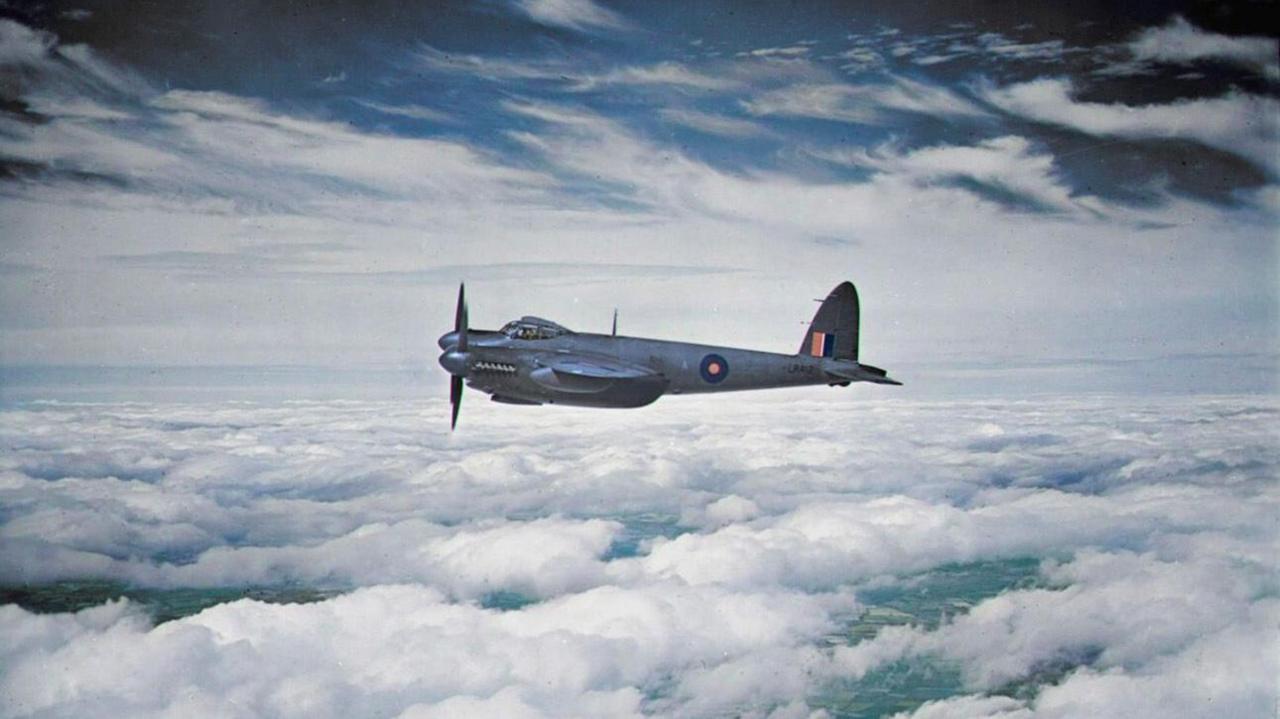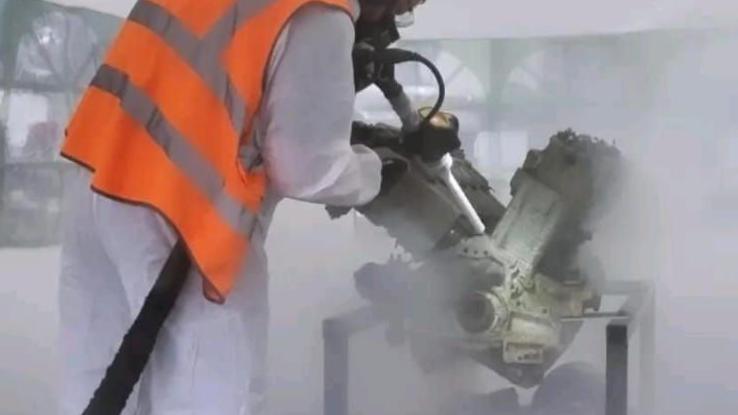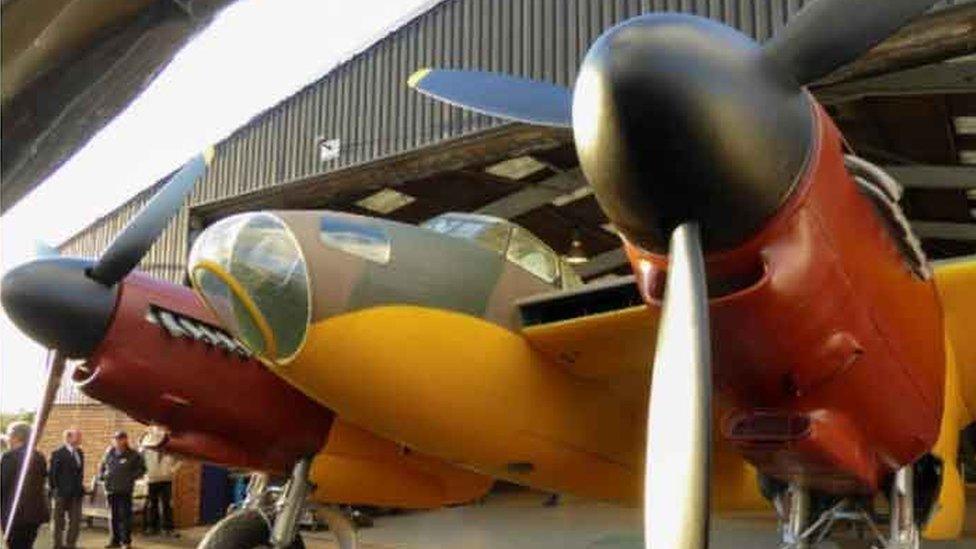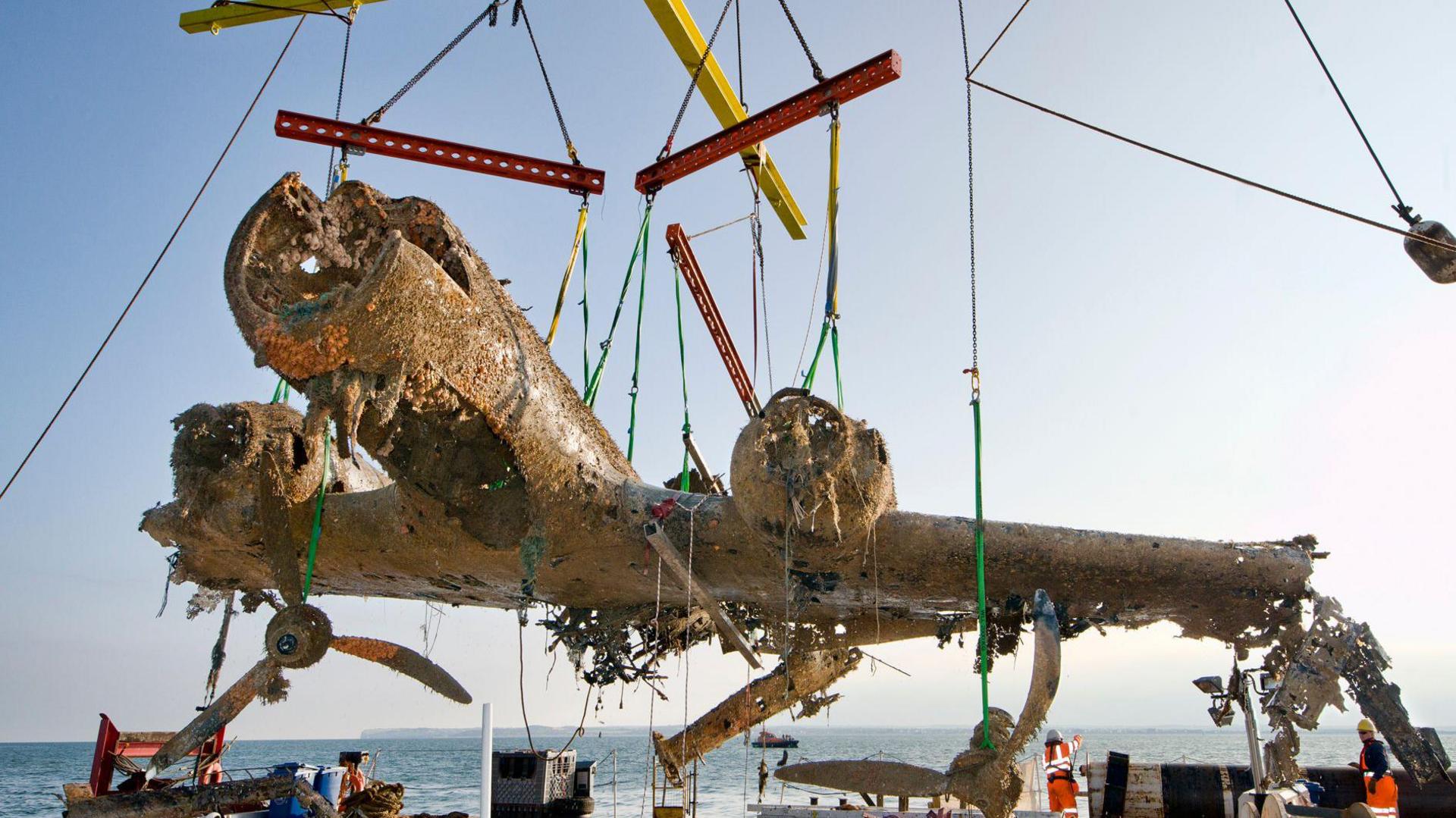WW2 plane's engine restored to honour RAF crew

The Mosquito, pictured here in 1943, crashed into a Welsh mountainside in February 1944 during a test flight from RAF Benson
- Published
The engine of a World War Two plane has been restored as part of a campaign to recognise the contribution of reconnaissance missions by RAF personnel during the conflict.
The Rolls-Royce Merlin engine, from an RAF Mosquito that flew in several operations across occupied Europe, was restored in Bicester, Oxfordshire.
The Mosquito was attacked on five occasions and returned to the UK twice, with just one working engine.
The plane crashed into a Welsh mountainside in 1944, killing both crew members, after leaving RAF Benson for a test flight.

The engine, heavily corroded after spending more than 40 years at the crash site, was cleaned using dry ice
The engine's restoration, by Eco Group, forms part of a campaign to have those who flew reconnaissance operations recognised with a monument in Whitehall in central London.
Tony Hoskins, director of campaign group Spitfire AA810 Restoration, said the plane had remained at the crash site at Aran Fawddwy Mountain in Merionethshire, until it was recovered in the early 1980s.
He said the engine was in predictably poor condition when it was recovered.
'Sea air corrosion'
"During war time production there wasn't a lot of effort put into corrosion prevention - they weren't going to last very long," he said.
"There was an awful lot of corrosion from the sea air and biological growth."
The DH98 de Havilland Mosquito was regarded as the most versatile war plane and was used for fighting, bombing, reconnaissance and pathfinder missions.
This particular plane was constructed in early 1943 and assigned to 540 Photographic Reconnaissance Squadron based at RAF Benson.
It flew unarmed operations all over occupied Europe, including France, Germany, Italy, Norway and Poland.
It crashed on 9 February 1944 killing pilot Marek Slonski-Ostoja and navigator Paul Riches - who are buried together in Chessington Churchyard, London.
It is hoped the monument will be installed in 2026.
The engine is currently on display at the Classic Collective workshop in Bicester.
Get in touch
Do you have a story BBC Oxfordshire should cover?
You can follow BBC Oxfordshire on Facebook, external, X (Twitter), external, or Instagram, external.
Related topics
More stories like this
- Published22 November 2020

- Published7 November 2024
